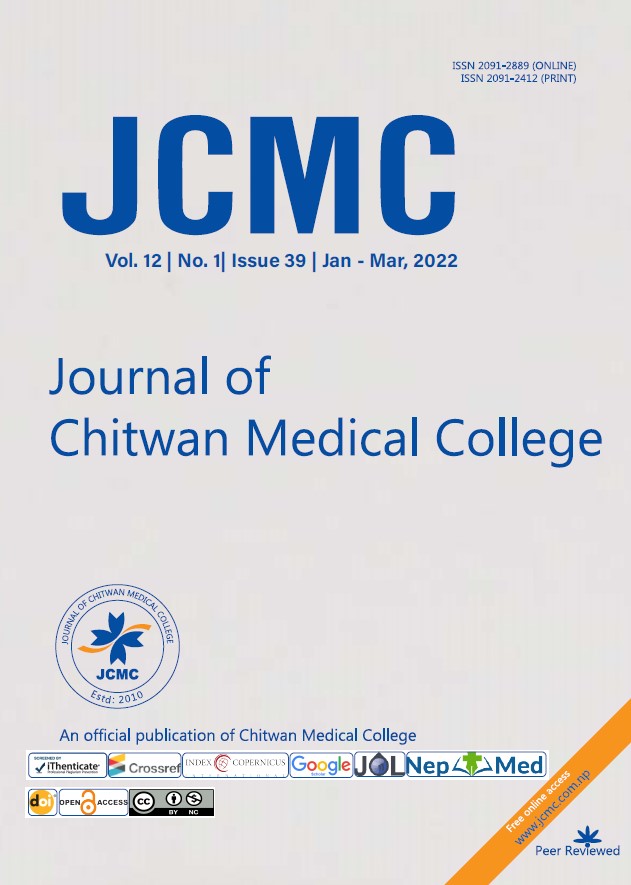Demographic, clinical and virological profile of patients with chronic hepatitis C virus infection
Keywords:
Cirrhosis; Genotypes; Hepatitis C; Liver enzymes; Viral load.Abstract
Background: Chronic Hepatitis C virus (HCV) is a major public health issue worldwide. Chronic HCV is an important cause of cirrhosis and hepatocellular carcinoma. Hepatitis C infection is not uncommon in Nepal. This research was meant to study the demographic, clinical presentation, and virological profile of patients with chronic hepatitis C attending a teaching hospital in Western Nepal.
Methods: A hospital-based, cross-sectional study was conducted over a year from January 2021 and December 2021 among 66 consecutive patients with hepatitis C infection. Demographic and clinical profile of the patients alongside their liver enzymes, viral load, and genotypes at the time of presentation were studied. Descriptive analysis was done using SPSS version 20.
Results: The mean age of subjects was 34±10.42 years with male predominance (M: F=2.3:1). The majority was from rural areas and belonged to low-middle socioeconomic status. Injecting drug use was the most common mode of infection. The majority of patients had no symptoms related to liver diseases. About one-fourth of the patients had cirrhosis of liver. High viral load (HCV RNA> 800,000 IU/ml) was detected in 42.4% patients. The mean HCV RNA was 1348,500 ±1052 IU/ml. Genotype 3a was the most common, followed by genotype 1a.
Conclusions: Hepatitis C virus infection was common in young patients (aged <40 years) especially among injecting drug users. Most of the patients had no symptoms related to liver diseases. Cirrhosis was observed in about one-fourth patients. Genotype 3a was the most common, followed by genotype 1a.
Downloads
Downloads
Published
How to Cite
Issue
Section
License
Copyright (c) 2022 Subash Bhattarai, Dharm Raj Bhatta, Balram Gautam

This work is licensed under a Creative Commons Attribution 4.0 International License.




